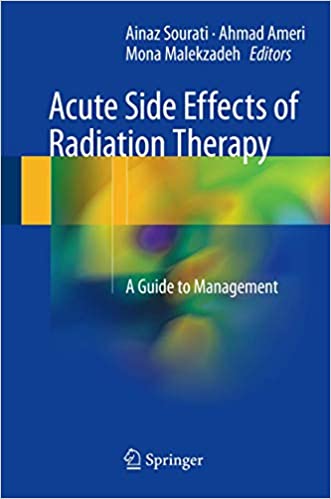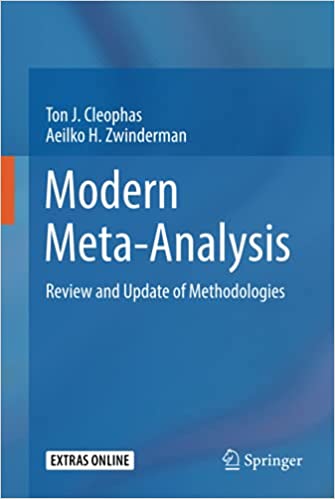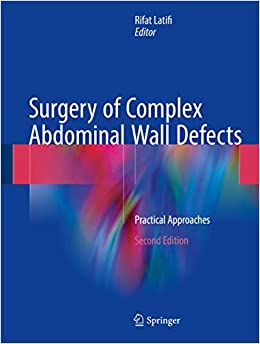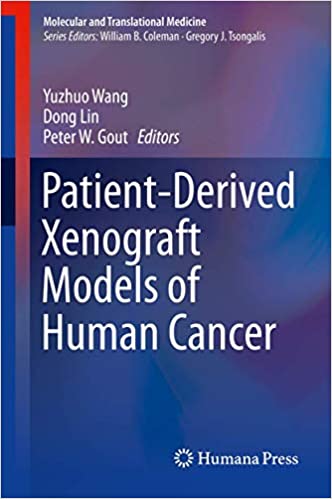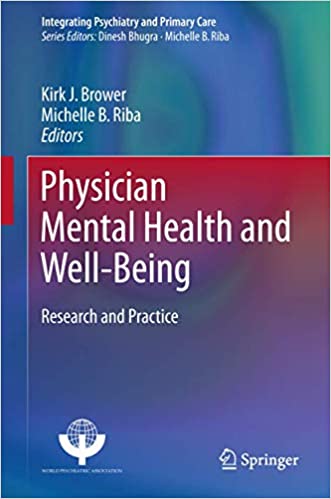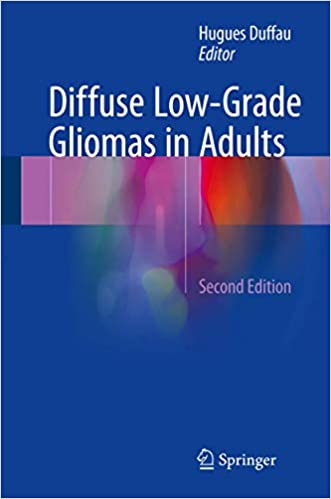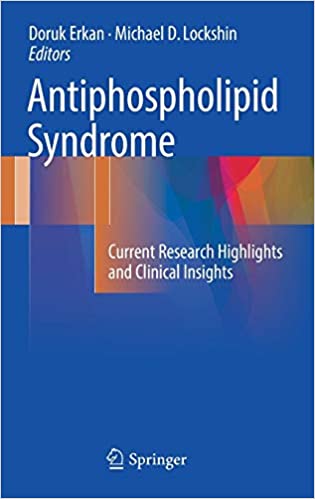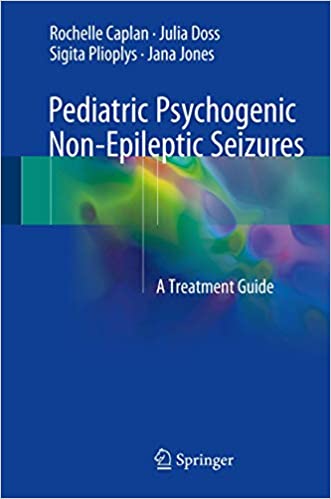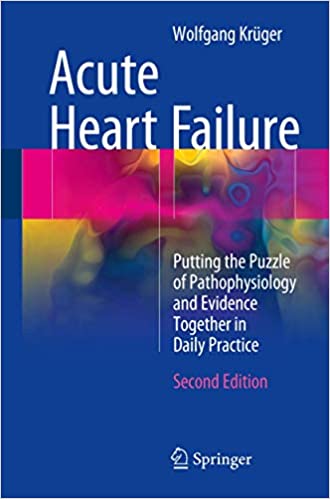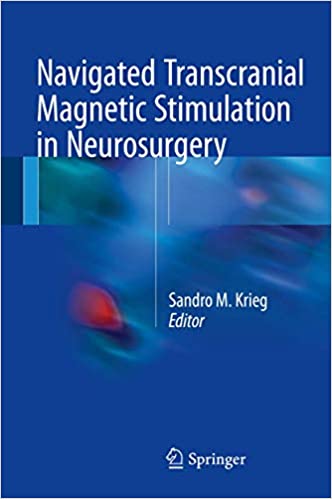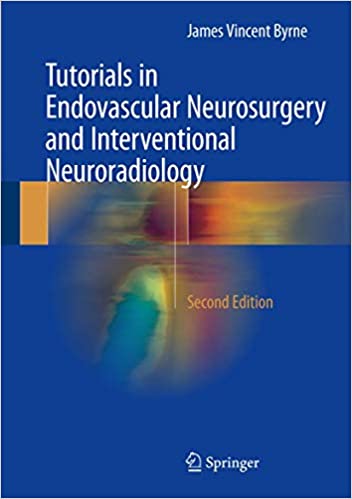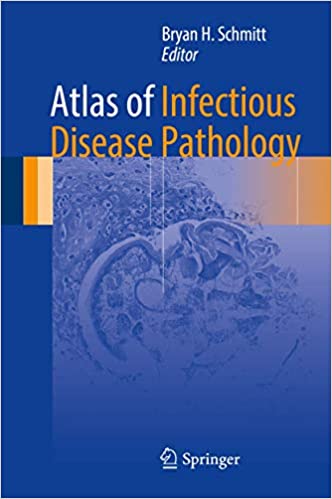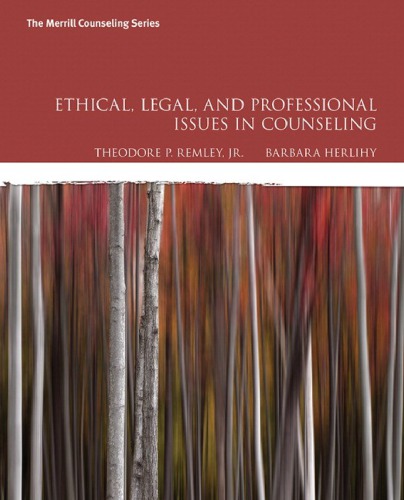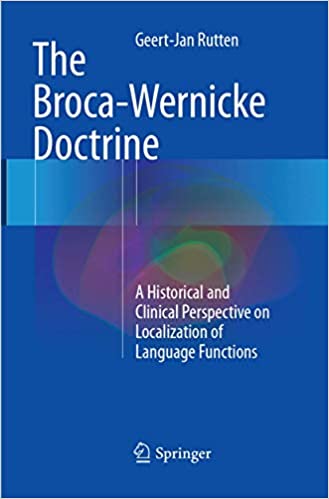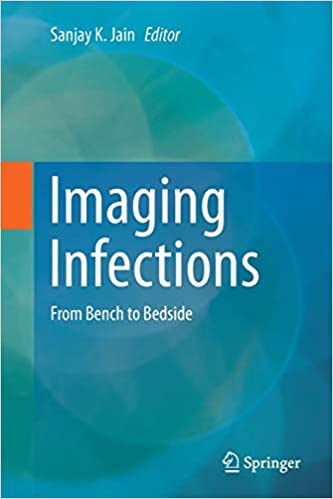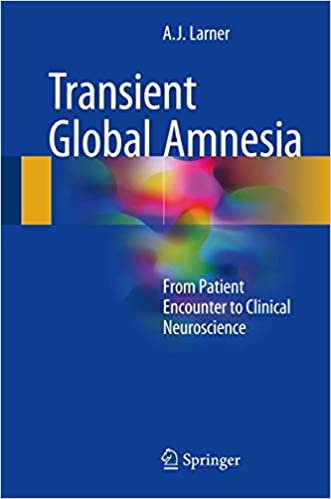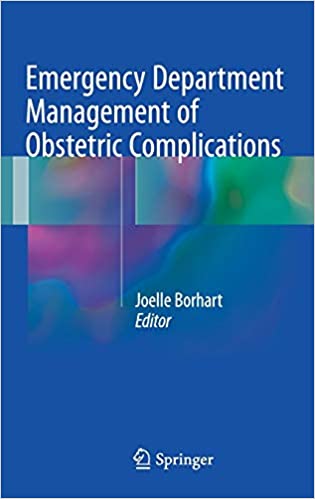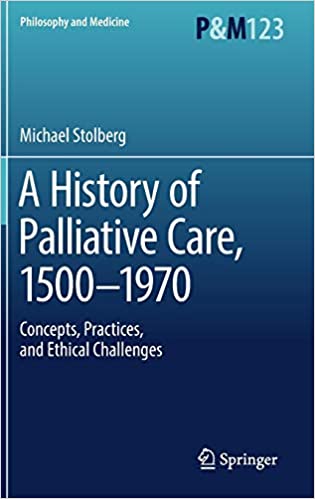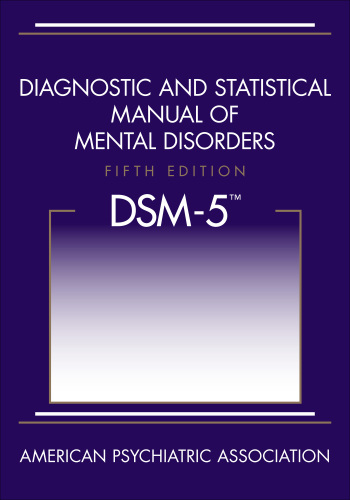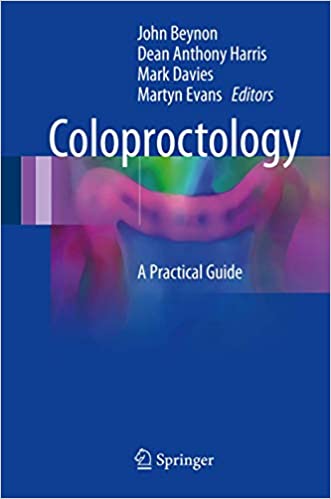
Saturday, April 30, 2022
Friday, April 29, 2022
Thursday, April 28, 2022
Site-based Management Creates Opportunities – Part 1

Site-based management can be defined as the formal alteration of school governance arrangements. Site-based management is a form of decentralization. Site-based management has three distinctive features:
(1) Some formal authority to make decisions in the central domains of budget, personnel and program is delegated to the school site.
(2) The formal authority to make decisions may be delegated to the principal, or distributed among principals, teachers, parents and others. In most cases, the formal authority to make decisions is broadly distributed.
(3) While the formal authority granted site participants may be circumscribed by existing statutes, regulations or contractual agreements, site participants are afforded substantial discretion.
Essentially, site-based management is supposed to:
- enable site participants, notably teachers and parents, to exert substantial influence on school policy decisions.
- enhance employee morale and motivation.
- strengthen the quality of school-wide planning processes.
- stimulate instructional improvements
- foster the development of characteristics associated with effective schools.
- improve the academic achievement of students
The available information casts doubt on the ability of site-based management plans to achieve these objectives. A variety of factors offset the ability of site-based management to fulfill the promises set forth by proponents of this reform.
Since there is little evidence that site-based management plans have achieved their objectives, policy makers and educators need to consider the viability of site- based management as a reform strategy, the factors that restrict the ability of site- based management to achieve its objectives and the need for continuous, systematic assessment of site-based management programs.
It may be that site-based management is not an effect approach to education reform. Thus policy makers and educators need to carefully consider whether they wish to invest in a reform strategy that has not been able to achieve its objectives in the vast majority of settings in which it has been attempted.
It is also possible, however, that site-based management has not been given a full or fair test. It may be premature to dismiss the substantive potential of site-based management on the basis of only eight systematic studies, particularly when some of these studies indicate there may be isolated instances where site-based management appears to be approaching, if not achieving its stated objectives. Thus policy makers and educators may decide to give site-based management a more full and fair test by designing plans that attend to the factors that affect the viability of this reform. It may be that if these factors were addressed, site-based management could become an effective approach to education reform.
Numerous factors inhibit the ability of site-based management to achieve its objectives. The viability of this reform may depend on the willingness of policy makers and educators to confront all these factors. The literature offers the following general guidelines:
(1) Site-based management plans must specify what authority is delegated to site participants, how that authority is distributed and the manner in which the discretion of site participants is conditioned and constrained by contractual agreements, by district, state or federal policies, procedures and/or accountability provisions.
(2) Site-based management plans must provide site participants adequate resources, namely time, training, technical assistance and supplemental funds.
(3) Site-based management plans must incorporate strategies for changing participant orientations and organizational norms.
While the existing literature on site-based management identifies factors that impede the ability of this reform to achieve its stated objectives there are no guarantees that site-based management will fulfill its promises even if some of all of these factors are addressed. Therefore, continuous, systematic assessments of site-based management programs must be conducted to determine the conditions under which site-based management might be able to achieve its objectives and operate to improve the performance of schools.
Site-based management has resurfaced as a prominent education reform. Numerous states and districts are discussing, instituting or reinstituting a variety of site-based management provisions. In Utah, state policy makers, district officials and education organizations have expressed interest in site-based management as a potential education reform.
The purpose of this paper is to provide information on site-based management and discuss issues that warrant attention as policy makers and educators consider this reform. Following a brief description of data sources, this paper addresses four central questions:
(1) What is site-based management?
(2) What is site-based management supposed to accomplish?
(3) Have site-based management plans achieved their objectives?
(4) What issues warrant special attention as policy makers and educators consider site- based management as a reform option?
Project description/status reports describe both current and previous attempts to institute site-based management. These accounts tend to sketch the general features of site-based management plans, identify the rationales used to advance these plans, and offer judgments regarding the impact of these plans. These documents tend to focus on the activities spawned, the adjustment made or the achievements attained in a small number of the most successful pilot schools.
Position papers set forth arguments for and against site-based management. Nearly all position papers are advocacy pieces. They issue a call for a seek to build a case for greater autonomy at the school level, identify conditions under which various decentralization ventures might accomplish their intended objectives and prescribe procedures that districts might follow to implement site-based management. Position papers tend to focus on the exceptional cases, the most successful schools. These documents also tend to rely on testimonials from single individuals associated with model site-based management projects or general references to effective schools research, participatory decision making research, or unspecified theories of modern management.
Related literature sources report or review research on topics closely associated with site- based management. Because research on effective schools, decentralization, participatory decision-making and other topics has been used to support arguments offered by advocates of site-based management, literature regarding each of these subjects was examined. The sources consulted for this paper were confined to those most frequently cited in writings on site-based management.
Information acquired from these data sources must be viewed with caution for several reasons. First, the literature on site-based management is characterized by a preponderance of project descriptions/status reports and position papers. Most of these sources focus on exceptional cases and rely on the impressions of a single individual. Second, the eight systematic studies of site-based management rely on the experiences of a relatively small number of elementary and secondary schools in diverse settings. These studies examine different versions of site-based management, focus on different dimensions of site-based management, and employ different research designs.
Despite these limitations, the information acquired from these sources provides a basis for addressing a number of important questions and a basis for identifying the issues that warrant special attention as policy makers and educators consider site- based management as a reform option.
In this section, we offer a definition of site-based management and identify the distinctive features of this reform. We illustrate the manner in which these features are treated in various site- based management plans.
While there are different uses of the terms, site-based management can be defined as a formal alteration of school governance arrangements. Site-based management is a form of decentralization.
Although site-based management plans embody the three distinctive features noted above, these plans often address the distinctive features of this reform in highly ambiguous ways. In many instances, it is difficult to determine whether site- based management plans fundamentally alter the formal decision making arrangements in school systems. Plans do not specify what authority has been delegated in the domain of budget, personnel and program or how that authority is distributed among principals, teachers, parents and others. Moreover, plans do not demonstrate that site participants have been granted any greater discretion. Where these features are more explicitly addressed, they are treated in a variety of ways. Existing site-based management plans differ on what authority is delegated to the site, how that authority is distributed among various participants at the site, and the degree of discretion afforded site participants.
Site-based management plans emphasize different domains. For example, some plans emphasize greater authority over budgets and include as a secondary concern, greater authority in personnel and program areas. Other plans emphasize program but give less attention to matters of budget and personnel. For example, some emphasize authority over discretionary funds versus entire operating budgets, or authority over staff development versus staff selection.
Site-based management plans distribute decision making authority differently. In some plans, authority is lodged with the principal, who may be encouraged but not required to involve others. More often, authority is lodged with councils of professional and/or patrons. However, councils within and across settings may be constituted quite differently. In some instances, teachers and patrons hold the formal power advantage since they can hire and fire the principal.
Generally speaking, influence refers to the ability of participants to affect decisions on issues that are central to the organization and/or salient to the individuals. Proponents argue that if site-based management is instituted, site participants, notably teachers and parents, will be able to exert significant influence on significant issues. They will be able to do so because formal authority to make decisions in the central domains of budget, personnel and program is delegated to the school level and distributed among teachers and parents as well as principals.
The available data indicate that this promise is rarely realized. Although site-based management creates opportunities for principals, teachers and parents to be involved in school-wide decision making through interactions on school councils or committees, there is little evidence that teachers and parents exert substantial influence on school policy decisions.
Project descriptions/status reports and systematic studies suggest that, while there may be a few exceptions, school councils rarely address central, salient issues in their school councils or committee meetings.
Councils do address a variety of topics related to the operation of the building or the implementation of district directives. One systematic study documents that, on occasion, school councils may take on a caucus function.
The available data indicate that while site-based management creates opportunities for teachers and parents to be involved in decision making, it does not enable them to exert substantial influence on school policy decisions. A wide range of factors shape influence relationships in school systems. Since site-based management adjusts only one factor, the formal governance structures, it may be unable to fundamentally alter influence relationships.
The dominant theme is that site participants, notably teachers and parents, rarely exerted influence in the core domains of budget, personnel and program through community school boards, through advisory councils, or through other participatory decision making arrangement. In some cases, these structural adjustments operated to diffuse conflict and calm the system. For reasons similar to, albeit not limited to, those identified above, these sources conclude that the formal alteration of governance arrangements did not enable teachers and parents to exert significant influence on significant issues at the school level.
Site-based management appears to have an initial, positive impact on the morale- motivation of some participants. However, a variety of factors restrict the ability of site-based management to produce a substantial or sustained improvement in the morale/motivation of a significant number of participants.
Jeff C. Palmer is a teacher, success coach, trainer, Certified Master of Web Copywriting and founder of https://Ebookschoice.com. Jeff is a prolific writer, Senior Research Associate and Infopreneur having written many eBooks, articles and special reports.
Source: https://ebookschoice.com/site-based-management-creates-opportunities-part-1/
Wednesday, April 27, 2022
Tuesday, April 26, 2022
Sunday, April 24, 2022
Saturday, April 23, 2022
Friday, April 22, 2022
Thursday, April 21, 2022
Gene Control 2nd Edition by David Latchman, ISBN-13: 978-0815345039 | ebookschoice.com
Gene Control 2nd Edition by David Latchman, ISBN-13: 978-0815345039 | ebookschoice.com: Gene Control 2nd Edition by David Latchman, ISBN-13: 978-0815345039 [PDF eBook eTextbook] Publisher: Garland Science; 2nd edition (February 23, 2015) Language: English 505 pages ISBN-10: 9780815345039 ISBN-13: 978-0815345039 Our understanding of two major themes in gene regulation has advanced considerably in the last few years and this is reflected in this new edition. The first of these is the regulation of chromatin structure and its role in gene regulation. Although a chapter was…

Wednesday, April 20, 2022
The Glossary of Higher Education - EbooksCheaper.com

The Glossary of Higher Education - The three guidelines of simpler is better, focusing on what the reader needs to know, and reducing possible misinterpretations can be applied to all glossary examples.
A
Ability grouping The assignment of students to separate classrooms or to separate activities within a classroom according to their perceived academic abilities. Homogeneous grouping is the grouping of students of similar abilities; heterogeneous grouping is the grouping of students of mixed abilities.
Academies Private secondary schools that prepared students for a number of fields. The first academy was founded in Philadelphia by Benjamin Franklin in 1751.
Accommodation The cognitive process of modifying a schema or creating new schemata.
Accountability Reference to the concept that an individual is responsible for his or her behaviors and should be able to demonstrate publicly the worth of the activities carried out.
Adolescence The period of life from the onset of puberty to maturity, terminating legally at the age of majority, generally the ages of 12 to 20, although young or early adolescence may start as soon as age 9.
Advance organizer Preinstructional cues that encourage a mental set; used to enhance retention of content to be studied.
Advisor-advisee Common to many middle schools and increasingly in high schools, the program (sometimes referred to as home base or advisory program) that provides each student the opportunity to interact with peers about school and personal concerns and to develop a meaningful relationship with at least one adult.
Affective domain The area of learning related to interests, attitudes, feelings, values, and personal adjustment.
Aims The most general educational objectives.
Alternative assessment Assessment of learning in ways that are different from traditional paper-and-pencil objective testing, such as a portfolio, project, or self-assessment. See authentic assessment.
American Federation of Teachers (AFT) A national professional organization of teachers founded in 1916, currently affiliated with the American Federation of Labor and Congress of Industrial Organizations (AFL-CIO). It was recently merged in at least two states with the National Education Association.
Anticipatory set See advance organizer.
Articulation Term used when referring to the connectedness of the various components of the formal curriculum—vertical articulation refers to the connectedness of the K–12 curriculum, and horizontal articulation refers to the connectedness across a grade level.
Assessment The relatively neutral process of finding out what students will or have learned as a result of instruction.
At-risk General term given to a student who shows a high potential for not completing school.
Authentic assessment The use of assessment procedures (usually portfolios and projects) that are highly compatible with the instructional objectives. Also referred to as accurate, active, aligned, alternative, direct, and performance assessment.
B
Behavioral objective A statement of expectation describing what the learner should be able to do on completion of the instruction.
Behaviorism A theory that equates learning with changes in observable behavior.
Block scheduling The school programming procedure that provides large blocks of time (e.g., 90 minutes or 2 hours) in which individual teachers or teacher teams can organize and arrange groupings of students for varied periods of time, thereby more effectively individualizing the instruction for students with various needs and abilities.
Blogs A special type of website where students can create, write, and share their stories, opinions, and thoughts by posting commentary, news, and other information.
Brainstorming An instructional strategy used to create a flow of new ideas, during which judgments of the ideas of others are forbidden.
Brown v. Board of Education In 1954, this landmark decision of the U.S. Supreme Court declared that it is unconstitutional for states to establish separate public schools for black and white students.
C
CD-ROM (compact disc—read-only memory) Digitally encoded information (up to 650 MB of data that can include animation, audio, graphics, text, and video) permanently recorded on a compact (4.72-inch [12-cm diameter]) disc.
Character education A program that focuses on the development of the values of honesty, kindness, respect, and responsibility.
Charter school A school that is “an autonomous educational entity operating under a charter, or contract, that has been negotiated between the organizers, who create and operate the school, and a sponsor, who oversees the provisions of the charter.”
Classroom Response Systems Commonly called “clickers,” these are wireless devices that allow teachers to ask questions and receive and tally responses from students instantaneously.
Clarifying question A question used to gain more information from a student to help the teacher better understand a student’s ideas, feelings, and thought processes.
Classroom control The process of influencing student behavior in the classroom.
Classroom management The teacher’s system of establishing a climate for learning, including techniques for preventing and handling student misbehavior.
Closure The means by which a teacher brings the lesson to an end.
Coaching See mentoring.
Cognition The process of thinking.
Cognitive disequilibrium The mental state of not yet having made sense out of a perplexing (discrepant) situation.
Cognitive domain The area of learning related to intellectual skills, such as retention and assimilation of knowledge.
Cognitive psychology A branch of psychology devoted to the study of how individuals acquire, process, and use information.
Cognitivism A theory that holds that learning entails the construction or reshaping of mental schemata and that mental processes mediate learning. Also known as constructivism.
Common Core State Standards In March 2010, in an effort to define the skills and knowledge all students should obtain during their K–12 education regardless of where they live and attend school and to guarantee that students are ready for college courses or entry into the job market when they graduate high school, the Common Core State Standards were released for public comment.
Common planning time A regularly scheduled time during the school day when teachers who teach the same students meet for joint planning, parent conferences, materials preparation, and student evaluation.
Compact disc (CD) A 4.72-inch disc on which a laser has recorded digital information.
Comprehension A level of cognition that refers to the skill of understanding.
Comprehensive high school School that offers college preparatory, general, and vocational tracks.
Computer literacy The ability, at some level on a continuum, to understand and use computers.
Computer-assisted instruction (CAI) Instruction received by a student when interacting with lessons programmed into a computer system. Also known as computerassisted learning (CAL)
Computer-managed instruction (CMI) The use of a computer system to manage information about learner performance and learning-resources options in order to prescribe and control individual lessons.
Concept map A visual or graphic representation of concepts and their relationships; words related to a key word are written in categories around the key word, and the categories are labeled.
Constructivism See cognitivism.
Co-teaching This innovative approach to the traditional student teaching placement is a popular model where the cooperating teacher and the student teacher share the classroom and the students and work together and share in the planning, organization, delivery, and assessment of their students.
Continuous progress An instructional procedure that allows students to progress at their own pace through a sequenced curriculum.
Convergent thinking Thinking that is directed to a preset conclusion.
Convergent thinking question A low-order thinking question that has a single correct answer such as a recall question.
Cooperative learning A genre of instructional strategies that use small groups of students working together and helping each other on learning tasks, stressing support for one another rather than competition.
Core curriculum Subject or discipline components of the curriculum considered as being absolutely necessary. Traditionally these are English/language arts, mathematics, science, and social studies/history.
Course A complete sequence of instruction that presents a major division of a subject matter or discipline. Courses are laid out for a year, semester, quarter, or, in the case of minicourses or intensive courses, a few weeks.
Covert behavior A learner behavior that is not outwardly observable.
Criterion A standard by which behavioral performance is judged.
Criterion-referenced assessment Assessment in which standards are established and behaviors are judged against the present guideline rather than against the behaviors of others.
Critical literacy An instructional approach that provides students with strategies to actively analyze the texts they are assigned to read and increase their comprehension.
Critical thinking The ability to recognize and identify problems, to propose and to test solutions, and to arrive at tentative conclusions based on the data collected.
Cueing question When a teacher goes backward in a questioning sequence to cue students.
Cultural competence As defined by Diller and Moule, cultural competence “is the ability to successfully teach students who come from cultures other than your own. It entails mastering complex awareness and sensitivities, various bodies of knowledge, and a set of skills that, taken together, underlie effective cross-cultural teaching.”
Cultural literacy This concept highlights that in addition to basic literacy skills, citizens in the United States should share a common body of knowledge in order to be considered educated/literate and fully participate in society.
Culturally sensitive pedagogy A student-centered approach that integrates the students’ cultural beliefs, traditions, and values into the teaching/learning process while emphasizing integration, critical thinking, and community involvement.
Culture Simply stated, culture is shared, learned behavior. It shapes values, beliefs, traditions and mores. Our cultural heritage determines who we are and helps us to make sense of the world.
Curriculum Originally derived from a Latin term referring to a race course for the chariots, the term still has no widely accepted definition. As used in this text, curriculum is that which is planned and encouraged for teaching and learning. This includes both school and nonschool environments, overt (formal) and hidden (informal) curriculums, and broad as well as narrow notions of content—its development, acquisition, and consequences.
Curriculum mapping The initial step in the process of designing integrated curriculum where middle and high school teachers list what they each teach in their disciplines in a calendar year.
Curriculum standards Statements of the essential knowledge, skills, and attitudes to be learned.
Cyberbullying A form of bullying where aggressors use email, instant messaging, chat room exchanges, website posts, or digital messages or images sent via a cellular phone or personal digital assistant to intimidate and terrorize victims.
D
Dame school The first schools, run by women in their homes during the colonial era. Reading, writing, and basic math skills were taught.
Deductive learning Learning that proceeds from the general to the specific. See also
expository learning.
Detracking An effort to minimize or eliminate separate classes or programs for students who are of differing abilities.
Developmental characteristics A set of common intellectual, psychological, physical, and social characteristics that, when considered as a whole, indicate an individual’s development relative to others during a particular age span.
Developmental needs A set of needs unique and appropriate to the developmental characteristics of a particular age span.
Diagnostic assessment See preassessment.
Didactic teaching See direct instruction.
Differentiated instruction Varying the methods and content of instruction according to individual student differences and needs.
Direct experience Learning by doing (applying) that which is being learned.
Direct instruction Teacher-centered expository instruction, such as lecturing or a teacher-guided group discussion.
Direct intervention Teacher use of verbal reminders or verbal commands to redirect student behavior, as opposed to nonverbal gestures or cues.
Direct teaching See direct instruction.
Discipline The process of controlling student behavior in the classroom. The term has been largely replaced by the terms classroom control or classroom management. It is also used in reference to the subject taught (e.g., language arts, science, mathematics, and so forth).
Discovery learning Learning that proceeds from identification of a problem, through the development of hypotheses, the testing of the hypotheses, and the arrival at a conclusion. See also critical thinking.
Divergent thinking Thinking that expands beyond original thought.
Divergent thinking question Open-ended (i.e., usually having no single correct answer) higher-order thinking questions (requiring analysis, synthesis, or evaluation) that require students to think creatively, to leave the comfortable confines of the known and reach out into the unknown.
Downshifting Reverting to earlier learned, lower-cognitive- level behaviors.
DVD (digital versatile disc or digital video disc) Media storage device like a CD-ROM but with a much greater storage capacity.
E
Early adolescence The developmental stage of young people as they approach and begin to experience puberty. This stage usually occurs between 10 and 14 years of age and deals with the successful attainment of the appropriate developmental characteristics for this age span.
Eclectic Utilizing the best from a variety of sources.
Effective school A school where students master basic skills, seek academic excellence in all subjects, demonstrate achievement, and display good behavior and attendance. Also known as an exemplary school.
Elective High-interest or special needs courses that are based on student selection from various options.
Elementary school Any school that has been planned and organized especially for children of some combination of grades kindergarten through 6. There are many variations, though; for example, a school might house children of preschool through grade 7 or 8 and still be called an elementary school.
Empathy The ability to understand the feelings of another person.
English classical school These schools provided a free public education for all students. They first opened in Boston in 1821 and offered a practical curriculum.
English Language Learners (ELLs) Students whose first language is other than English who are in the process of developing English-language proficiency.
Equality Considered to be the same in status or competency level.
Equity Fairness and justice, that is, impartiality.
Evaluation Like assessment but includes making sense out of the assessment results, usually based on criteria or a rubric. Evaluation is more subjective than is assessment.
Evaluative question A question that requires students to take a stance on some issue.
Exceptional learner A child who deviates from the average in any of the following ways: mental characteristics, sensory ability, neuromotor or physical characteristics, social behavior, communication ability, or multiple handicaps. Also known as a child with special needs.
Exemplary school See effective school.
Exploratory course A course designed to help students explore curriculum experiences based on their felt needs, interests, and abilities.
Expository learning The traditional classroom instructional approach that proceeds as follows: presentation of information to the learners, reference to particular examples, and application of the information to the learner’s experiences.
Extended-year school Schools that have extended the school-year calendar from the traditional 180 days to a longer period, such as 200 days.
Extrinsic motivators Motivation of learning by rewards outside of the learner, such as parent and teacher expectations, gifts, certificates, stamps, and grades.
F
Facilitating behavior Teacher behavior that makes it possible for students to learn.
Facilitative teaching See indirect instruction.
Fair Use Guidelines Although the earliest guidelines appeared in 1976, more recently several organizations have tried to interpret copyright law and inform teachers of what they may do under the law when using printed materials, illustrations, videos, computer software, resources on the Internet, television programming, and so on in their teaching.
Faculty handbooks These manuals usually contain clear descriptions of the expectations for faculty to help to acquaint them with the practices, policies, and procedures of a school and district.
Family See school-within-a-school.
Feedback Information sent from the receiver to the originator that provides disclosure about the reception of the intended message.
Flexible scheduling Organization of classes and activities in a way that allows for variation from day to day as opposed to the traditional, fixed schedule that does not vary from day to day.
Focus question A question that is designed to focus student thinking.
Formative assessment Evaluation of learning in progress.
For-profit school A public school that is operated by a for-profit company.
Full-service school A school that serves as a hub for quality education and comprehensive social services.
Fundamental school A school that specializes in teaching basic skills.
G
Generalizations General statements that can help explain commonalities shared to some degree with individuals who belong to various microcultures.
Goal An idea an individual intends to reach or hopes to accomplish.
Goal, course A broad generalized statement about the expected outcomes of a course.
Goal, educational A desired instructional outcome that is broad in scope.
Goal, student A statement about what the student hopes to accomplish.
Goal, teacher A statement about what the teacher hopes to accomplish.
Goals 2000 A reform initiative started in 1989 when then President George H. W. Bush convened all the governors to discuss the state of education. The resulting six national education goals were modified and became know as Goals 2000 under President Clinton.
Google Earth A free download that allows students to tour the earth through pictures and landscapes at a street level or through space.
GPS Global Positioning System is a navigation system that is a space-based satellite network maintained by the U.S. government.
H
Hands-on learning Learning by actively doing.
Heterogeneous grouping A grouping pattern that does not separate students into groups based on their intelligence, learning achievement, or physical characteristics.
High school A school that houses students in any combination of grades 9–12.
High-stakes assessment An assessment is called high stakes if use of the assessment’s results carry serious consequences, such as if a student’s grade promotion rests on the student’s performance on one test or the student’s graduation from high school rests on the student’s performance on a single test.
Holistic learning Learning that incorporates emotions with thinking.
Homogeneous grouping A grouping pattern that separates students into groups based on common characteristics, such as intelligence, achievement, or physical characteristics.
House See school-within-a-school.
I
Illiteracy The condition when students are unable to read or write or who are not proficient in comprehending the meaning of their grade-appropriate textbooks.
Inclusion The commitment to the education of each student with special needs, to the maximum extent appropriate, in the school and classroom the student would otherwise attend.
Independent study An instructional strategy that allows a student to select a topic, set the goals, and work alone to attain them.
Indian Boarding Schools Federal Indian policies in the late 1800s and early 1900s sought to civilize Indian children by removing them from their homes and teaching them rudimentary English and basic industrial trades and exposing them to religious indoctrination in boarding schools.
Indian Education for All Landmark legislation that amended the Montana Constitution in 1972 to incorporate the teaching of American Indian cultures and histories in the statutory definition of a quality education. This model exemplifies culturally responsive pedagogy in practice.
Indirect instruction Student-centered teaching using discovery and inquiry as learning strategies.
Individualized instruction The self-paced process whereby individual students assume responsibility for learning through study, practice, feedback, and reinforcement with appropriately designed instructional modules.
Individualized learning Self-paced instruction which is modified to meet the needs of individual students. Accommodating students with special needs can be accomplished by modifying lessons.
Inductive learning Learning that proceeds from specifics to the general. See also discovery learning.
Inquiry teaching Like discovery learning, except the learner designs the processes to be used in resolving the problem.
In-service teacher Term used when referring to credentialed and employed teachers.
Instruction Planned arrangement of experiences to help a learner develop understanding and achieve a desirable change in behavior.
Instructional module Any freestanding instructional unit that includes these components: rationale, objectives, pretest, learning activities, comprehension checks with instructive feedback, and posttest.
INTASC standards The Interstate New Teacher Assessment and Support Consortium has articulated standards that highlight what all beginning teachers should know and what they should be able to do.
Integrated curriculum Curriculum organization that combines subject matter traditionally taught independently.
Interdisciplinary instruction Instruction that combines subject matter disciplines traditionally taught independently.
Interdisciplinary team An organizational pattern of two or more teachers representing different subject areas. The team shares the same students, schedule, areas of the school, and the opportunity for teaching more than one subject. Also called interdisciplinary teaching teams.
Interdisciplinary thematic unit (ITU) A thematic unit that crosses boundaries of two or more disciplines.
Interdisciplinary thematic unit (integrated unit) A team representative of several disciplines—English/language arts, mathematics, science, social studies/history, and so forth—that plans collaboratively and creates unit plans that integrate their content areas by making relevant, meaningful connections across the curriculum.
Intermediate grades Term sometimes used to refer to grades 4 through 6.
Internalization The extent to which an attitude or value becomes a part of the learner. That is, without having to think about it, the learner’s behavior reflects the attitude or value.
International Baccalaureate School A school with a curriculum approved by the International Baccalaureate Organization (IBO), a worldwide nonprofit educational foundation founded in the 1960s and based in Switzerland.
Interscholastic sports Athletic competition between teams from two or more schools.
Intervention A teacher’s interruption to redirect a student’s behavior, either by direct intervention (e.g., by a verbal command) or by indirect intervention (e.g., by eye contact or physical proximity).
Intramural program Organized activity program that features events between individuals or teams from within the school.
Intrinsic motivation Motivation of learning through the student’s internal sense of accomplishment.
Intuition Knowing without conscious reasoning.
J
Junior high school A school that houses grades 7 through 9 or 7 through 8 and that has a schedule and curriculum that resemble those of the senior high school (grades 9–12 or 10–12) more than they do those of the elementary school.
K
K–8 Schools A reorganization alternative designed to better address the developmental needs of their preadolescents and early adolescents.
K An instructional technique developed by Donna Ogle in 1986 where students record what they know about a subject/ issue/topic (K), what students want to learn (W), and what students have learned (L) after an intervention in a graphic organizer designed to help them construct meaning.
L
Latin grammar school In 1635 the first secondary schools were founded in Boston. In the Latin grammar schools, young boys between 7 and 14 years of age received an education focusing on the classics.
Lau v. Nichols In 1974, the U.S. Supreme Court ruled in favor of Chinese students in San Francisco, expanding the rights of all limited English Proficient students across the United States.
Lead teacher The member of a teaching team who is designated to facilitate the work and planning of that team.
Leadership team A group of teachers and administrators, and sometimes students, designated by the principal or elected by the faculty (and student body) to assist in the leadership of the school.
Learning The development of understandings and the change in behavior resulting from experiences. For different interpretations of learning, see behaviorism and cognitivism.
Learning center (LC) An instructional strategy that utilizes activities and materials located at a special place in the classroom and is designed to allow a student to work independently at his or her own pace to learn one area of content. See also learning station.
Learning communities A group of teachers and students who are actively engaged in learning together. Students who participate in learning communities are often empowered and more intellectually mature. Faculty members who participate in learning communities can share their instructional strategies, collaborate with colleagues across disciplines, and develop their mentoring skills.
Learning modality The way a person receives information. Four modalities are recognized: visual, auditory, tactile (touch), and kinesthetic (movement).
Learning resource center The central location in the school where instructional materials and media are stored, organized, and accessed by students and staff.
Learning station (LS) Like a learning center, except that where each learning center is distinct and unrelated to others, learning stations are sequenced or in some way linked to one another.
Learning style The way a person learns best in a given situation.
Least restrictive environment (LRE) Under Public Law 94-142, the Education for All Handicapped Children Act— IDEA emphasized the normalization of the educational environment for students with disabilities. The legislation requires provision of an environment that is as normal as possible.
Lesson A subdivision of a unit, usually taught in a single class period or, on occasion, for two or three successive periods.
Looping An arrangement in which the cohort of students and teachers remain together as a group for several or for all the years a child is at a particular school. Also referred to as multiyear grouping, multiyear instruction, multiyear placement, and teacher-student progression.
M
Magnet school A school that specializes in a particular academic area, such as science, mathematics and technology, the arts, or international relations. Also referred to as a theme school.
Mainstreaming Placing an exceptional child in regular education classrooms for all or part of the school day.
Mandala A diagram, usually circular, with spiritual and ritual significance.
Mastery learning The concept that a student should master the content of one lesson before moving on to the content of the next.
Measurement The process of collecting and interpreting data.
Mentoring One-on-one coaching, tutoring, or guidance to facilitate learning.
Metacognition Planning, monitoring, and evaluating one’s own thinking. Also known as reflective abstraction.
Micro peer-teaching (MPT) Teaching a limited objective for a brief period to a small group of peers for the purpose of evaluation and improvement of particular teaching skills.
Microcultures Also referred to as microcultural groups, subcultures, or subsocieties. Groups whose members share certain cultural patterns. Individuals’ cultural identities are based on their identity with or membership in a variety of microcultures including race, ethnicity, religion, gender, age, socioeconomic status, ability, and language.
Middle grades Grades 5 through 8.
Middle-level education Any school unit between elementary and high school.
Middle school A school that has been planned and organized especially for students of ages 10 to 14.
Minds-on learning Learning in which the learner is intellectually active, thinking about what is being learned.
Misconception Faulty understanding of a major idea or concept. Also known as a naïve theory and conceptual misunderstanding.
Modeling The teacher’s direct and indirect demonstration, by actions and by words, of the behaviors expected of students.
Multicultural education A deliberate attempt to help students understand facts, generalizations, attitudes, and behaviors derived from their own ethnic roots as well as others. In this process, students unlearn racism and biases and recognize the interdependent fabric of society, giving due acknowledgment for contributions made by its members.
Multilevel instruction See multitasking.
Multilevel teaching See multitasking.
Multimedia program The combined use of sound, video, and graphics for instruction.
Multiple intelligences A theory of several different intelligences, as opposed to just one general intelligence; intelligences that have been described are verbal/linguistic, musical, logical/mathematical, naturalist, visual/spatial, bodily/kinesthetic, interpersonal, and intrapersonal.
Multipurpose board A writing board with a smooth plastic surface used with special marking pens rather than chalk. Sometimes called a visual aid panel, the board may have a steel backing and then can be used as a magnetic board as well as a screen for projecting visuals.
Multitasking The simultaneous use of several levels of teaching and learning in the same classroom, with students working on different objectives or different tasks leading to the same objective. Also called multilevel teaching.
N
Naïve theory See misconception.
National Education Association (NEA) The nation’s oldest professional organization of teachers, founded in 1857 as the National Teachers Association and changed in 1879 to its present name. Recently merged in at least two states (Montana and Minnesota) with the American Federation of Teachers.
No Child Left Behind (NCLB) Landmark legislation that promises to improve student achievement and change the culture of America’s schools while providing equal educational opportunity for all students. It became law on January 8, 2002.
Normal school The first teacher education programs designed to prepare teachers to teach.
Norm-referenced Individual performance is judged relative to overall performance of the group (e.g., grading on a curve), as opposed to being criterion-referenced.
O
Objectives Instructional objectives are statements describing what the student will be able to do upon completion of the instructional experience.
Orientation set See advance organizer.
Overhead projector A teaching tool that projects light through objects that are transparent.
Overlapping A teacher behavior where the teacher is able to attend to more than one matter at once.
Overt behavior A behavior that is outwardly observable.
P
Partnership school A school that has entered into a partnership agreement with community business and industry to link school studies with the workplace.
Peer-tutoring An instructional strategy that places students in a tutorial role in which one student helps another learn.
Performance assessment See authentic assessment.
Performance-based instruction Instruction designed around the instruction and assessment of student achievement against specified and predetermined objectives.
Performance objective See behavioral objective.
Phonics The application of sound-symbol relationships to the teaching of reading.
Podcasts Audio or audiovisual streams archived on the Internet that can be accessed from any computer or downloaded and transferred to an MP3.
Portfolio assessment An alternative approach to evaluation that assembles representative samples of a student’s work over time as a basis for assessment.
Positive reinforcer A means of encouraging desired student behaviors by rewarding those behaviors when they occur.
Preassessment Diagnostic assessment of what students know or think they know prior to the instruction.
Pre-service teacher Term used when referring to teachers in training, as opposed to in-service teachers; teachers who are employed.
Primary sources Materials, information, and accounts provided by witnesses or recorders that are firsthand accounts of events, practices, or conditions. They may include diaries, letters, reports, photographs, creative works, newspaper articles, and so on.
Probationary teacher An untenured teacher. After a designated number of years in the same district, usually three, on rehire the probationary teacher receives a tenure contract.
Probing question Similar to a clarifying question, the probing question requires student thinking to go beyond superficial first-answer or single-word responses.
Procedure A statement telling the student how to accomplish a task.
Psychomotor domain The domain of learning that involves locomotor behaviors.
Q
Question-answer relationship (QAR) A strategy used to question students about reading material that involves asking questions and providing one of three types of cues: “right there,” “search and think,” or “on your own.”
R
Race to the Top Under President Obama, states participated in a competitive grant program to support innovation and reform in an effort to improve student achievement.
Realia Real objects used as visual props during instruction, such as political campaign buttons, plants, memorabilia, art, balls, and so forth.
Reciprocal teaching A form of collaborative teaching in which the teacher and the students share the teaching responsibility and all are involved in asking questions, clarifying, predicting, and summarizing.
Recording Pens These sophisticated pens have an embedded computer and digital recorder that allow students to record what the teacher or classmates say and convert drawings and handwritten notes to text.
Reflection The conscious process of mentally replaying experiences.
Reflective abstraction See metacognition.
Relational Aggression A type of covert aggression or bullying often used by female adolescents to hurt an individual’s social status and/or control her relationships.
Reliability In measurement, the consistency with which an item or instrument is measured over time.
Response to Intervention (RTI) A method of intervention designed to provide early, systematic assistance to students experiencing academic difficulty.
Rubric An outline of the criteria used to assess a student’s work.
Rules In classroom management, rules are the standards of expectation for classroom behavior.
S
Schema (plural: schemata) A mental construct by which the learner organizes his or her perceptions of situations and knowledge.
School-within-a-school Sometimes referred to as a house, cluster, village, pod, or family, it is a teaching arrangement in which one team of teachers is assigned to work with the same group of about 125 students for a common block of time, for the entire school day, or, in some instances, for all the years those students are at that school.
Search engines These special websites on the World Wide Web compile like websites to aid users to find and select information.
Secondary school Traditionally, any school housing students for any combination of grades 7 through 12.
Self-contained classroom Commonly used in the primary grades, it is a grouping pattern in which one teacher teaches all or most all subjects to one group of children.
Self-paced learning See individualized learning.
Senior high school Usually a high school that houses only students in grades 9 through12 or 10 through 12.
Sequencing Arranging ideas in logical order.
Service learning A method of teaching, learning, and reflecting that combines academic classroom curriculum with meaningful community service.
Sheltered Instruction Observation Protocol (SIOP) A research-based model of sheltered instruction that promotes the teaching of content to English Language Learners in strategic ways that make subject matter concepts comprehensible while promoting the students’ English language development.
Simulation An abstraction or simplification of a real-life situation.
Skype A software application that allows users to talk over the Internet by voice and video as well as chat over the Internet.
Social networking Sites like Twitter and Facebook allow users to post pictures, video clips, and collect friends on their sites.
Socratic questioning Named for the Athenian teacher, Socrates, a questioning strategy in which a teacher asks students a series of questions and encourages students to develop their own conclusions and draw their own inferences.
Special needs student See exceptional child.
Special transitional school A one-year school designed to help recent immigrant students feel welcome and self-assured and to succeed in learning to read and write in English.
SQ3R A study strategy; students survey the reading, create questions, read to answer the questions, recite the answers, and review the original material.
SQ4R Similar to SQ3R but with the addition of recording; the students survey the reading, ask questions about what was read, read to answer the questions, recite the answers, record important items in their notebooks, and then review it all.
Standards See curriculum standards.
Stereotypes Absolute and inflexible descriptions of groups of individuals that ignore individual differences.
Student teaching A field experience component of teacher preparation, traditionally the culminating experience, where the teacher candidate practices teaching children while under the supervision of a credentialed teacher and a university supervisor.
Summative assessment Assessment of learning after instruction is completed.
T
Teacher leader See lead teacher.
Teaching See instruction.
Teaching style The way teachers teach; their distinctive mannerisms complemented by their choices of teaching behaviors and strategies.
Teaching team A team of two or more teachers who work together to provide instruction to the same group of students, either by alternating the instruction or by team teaching simultaneously.
Team teaching Two or more teachers working together to provide instruction to a group of students.
Tech prep high school A school that has a 4–2 coordinated curriculum that is articulated from grades 9 through 12 to the first two years of college, leading to an associate of applied science degree.
Tenured teacher After serving a designated number of years in the same school district (usually three) as a probationary teacher, on rehire the teacher receives a tenure contract, which means that the teacher is automatically rehired each year thereafter unless the contract is revoked by either the district or the teacher and for specific and legal reasons.
Terminal behavior That which has been learned as a direct result of instruction.
Thematic unit A unit of instruction built on a central theme or concept.
Theme school See magnet school.
Think-time Providing students with sufficient time to take things in and think about them before expecting them to react to them. See also wait time.
This We Believe: Keys to Educating Young Adolescents A position paper where the Association for Middle Level Education highlights the 16 characteristics of successful schools for adolescents ages 10 to 15.
Tiered Assignments Allow classroom teachers to teach concepts, skills, or ideas to a class of diverse learners by differentiating instruction to meet their individual needs.
Tracking The practice of voluntary or involuntary placement of students in different programs or courses according to their ability and prior academic performance. See also ability grouping.
Traditional teaching Teacher-centered direct instruction, typically using lectures, discussions, textbooks, and worksheets.
Transition In a lesson, the planned procedures that move student thinking from one idea to the next or that move their actions from one activity to the next. With reference to schooling, transitions are the times when a student moves from one level of school to the next.
21st Century Skills There are multiple descriptions of this term, but most include some of the following skills: life skills, workforce skills, technological skills, interpersonal skills, applied skills, and noncognitive skills.
U
Understanding by Design (backwards design) Invented by Grant Wiggins and Jay McTighe, this instructional method has teachers start with the end in mind and focus on the enduring understandings they want their students to develop.
Unit A major subdivision of a course, comprising planned instruction about some central theme, topic, issue, or problem for a period of several days to several weeks.
Untracking See detracking.
V
Validity In measurement, the degree to which an item or instrument measures that which it is intended to measure.
Village See school-within-a-school.
W
Wait time In the use of questioning, the period of silence between the time a question is asked and the inquirer (teacher) does something, such as repeats the question, rephrases the question, calls on a particular student, answers the question him- or herself, or asks another question. Also referred to as think-time.
Web Quests Designed by Bernie Dodge in 1995, these inquiry-based lessons are set up so that the majority if not all of the information and resources that the students need to access can be located on the Web.
Whole-language learning A point of view with a focus on seeking or creating meaning that encourages language production, risk taking, independence in producing language, and the use of a wide variety of print materials in authentic reading and writing situations.
Wikipedia Started in 2001, this is s free online encyclopedia that groups information in numerous categories on myriad topics.
Withitness The teacher’s timely ability to intervene and redirect a student’s inappropriate behavior.
Writeboard A Web-based free tool that allows multiple students to all be working on a document at the same time and share and revise their collaborative creation.
Y
Year-round school A school that operates as is traditional, that is, with 180 school days, but the days are spread over 12 months rather than the usual 10. Most common is the 9-weeks-on, 3-weeks-off format.
Young adolescent The 10- to 14-year-old experiencing the developmental stage of early adolescence.
Megan Wilson is a teacher, life strategist, successful entrepreneur, inspirational keynote speaker and founder of https://Ebookscheaper.com. Megan champions a radical rethink of our school systems; she calls on educators to teach both intuition and logic to cultivate creativity and create bold thinkers.
Source: https://ebookscheaper.com/2022/04/20/the-glossary-of-higher-education/
